

| |
03/11/03 |
| The Next Level dishes out a little Ancient history |
|
History and Background
But two things separate Ancient from the ArtDinks, Genkis, and Treasures. The first is that its gameography is very thin (only eight games after over a decade), especially for one that seems to have its name attached to so many projects. The reason why is that (similar to Opus Corp.) companies are allowed to approach Ancient and contract its employees for temporary work on a game or two. Having its resources split up constantly leaves very little time to focus on its own projects, and makes it even harder to develop completely original content not already based on a license. The second thing is the presence of Yuzo Koshiro. (Surely, you didn’t think that you’d read something about Ancient without the main focus turning towards him?) Easily one of the most influential figures in video game music composition ever, he has become a household name in Japan. In America, he lives well out of the range of mainstream view (aside from Steven L. Kent, who recognized him in an article about video game music), but Koshiro is much easier to spot than most: a copyright of music and his name almost always appears at the bottom of games he’s worked on. It’s also this high popularity that makes it easy to find all kinds of unusual information about him: Favorite food? Indian curry. Foot size? 27 cm. Body grease? 16.3! Born on December 12th, 1967 in Tokyo, he started playing the piano at the age of three and had a strong command of it by age five (his mother, Tomo Koshiro, was also a pianist). In 1975, he started tutelage under Joe Hisaishi – the John Williams of Japan, who has won five Japanese Academy Awards and has done most of the music for Studio Ghibli. He studied there for three years and everything after that has been self-taught. When he was 18, he was hired by Nihon Falcom, which was (and is still to this day) developing an assortment of software for Japanese PCs (PC-88, X6800, etc.), and it was here where he composed some of his tightest and sharpest compositions. The first was Xanadu Scenario II: The Resurrection of Dragon, which was followed by Romancia, Dragon Slayer Family, and Sorcerian. In 1987, Falcom released the first in their flagship series, Ys, and Koshiro produced the first score that he professes to be proud of. 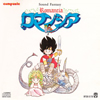 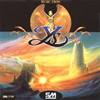 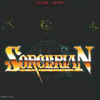 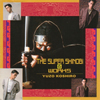
After working on Ys II, he left Falcom and went freelancing (the arranged versions of Ys Book I & II are not his work). With a string of musical hits already behind him, he dabbled with Namco (Bosconian) and Enix (Misty Blue) before finding more permanent work with Sega. Unlike his work at Falcom, which was shared between several other musicians, the soundtrack to Super Shinobi, known as The Revenge of Shinobi in the U.S., was entirely composed by him, and proved to be immensely popular among the console crowd. The following year, he composed the music for the Quest/Enix collaboration, ActRaiser, If Shinobi was considered popular, ActRaiser was an absolute blockbuster, and today it is admired as a quintessential example of early video game symphonic music. The same year that he scored ActRaiser (1990), Tomo Koshiro founded Ancient and, naturally, Yuzo became the company’s composer, while his sister, Ayano, became art and character designer (she was also the graphic designer on ActRaiser). Confident that the license was in good hands, Sega gave Ancient their first job: the Game Gear version of Sonic the Hedgehog, released in 1991. After composing Super Adventure Island for the Super Nintendo and Streets of Rage in 1992, Ancient completed their second full project: Streets of Rage 2 (see the Games page for an in-depth look). Following that was Yuzo’s return to outside composition for Alcon and the inferior sequel to ActRaiser, where Ayano also reprised her role as art director, and also became the game’s scenario writer and scroll designer. After creating the tracks to Streets of Rage 3, which received a lukewarm reception after unanimous praise for his work on Streets of Rage 2, they began work on the games in their first original series: Beyond Oasis and The Legend of Oasis (again, see the Games page for more on both games). After the release of these two games (1994 and 1996 respectively), Ancient began to fall into slight obscurity as it began to return to licensed work that was no longer being brought over to America. As the world started to begin its torrential love affair with RPGs and all things PlayStation, Ancient released Vatlva for the Saturn, a car-combat game of sorts. There was a pronounced effort to note that Vatlva featured the character designs of Hitoshi Ariga, who was becoming the group's next resident celebrity. (He had actually been with Ancient for most, if not all, of the time: object designer for Streets of Rage 2, illustrator for Beyond Oasis, part of the crew that helped with ActRaiser 2, and - further trivia - was object designer for Illusion of Gaia.) He had garnered attention for his artwork on Mega Man games and was the main illustrator for the anime series The Big O. Yuzo himself experienced a sort of upswing in popularity after composing the soundtrack to the popular Culdcept, a board/card video game for the Saturn that has spawned several sequels on the Dreamcast and PlayStation 2. A Tamagotchi simulator was the last game Ancient made for the Saturn before being commissioned by Arika to create a Card Captors Sakura game for the PlayStation. There was talk of releasing CCS in America during the beginning of anime’s sudden jump in U.S. popularity (Card Captors was being shown on the WB! Network at the time).  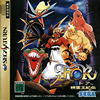 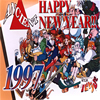 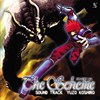
Things were quiet for a while until people started discovering that Yuzo Koshiro was composing music for the money vacuum known as Shenmue. Following the instructions of Yu Suzuki and taking personal inspirations from the vivid universe of the game, he composed fifteen original songs, working alongside Takeshi Yanagawa and Ryuji Iuchi. Ten other staff members from Ancient were called in to work on the game, though only three remained to the very end. There have always been murmurs and wishes for a new Streets of Rage, and it turns out that during the Dreamcast’s lifespan, members of Ancient actually started some preliminary work on it, getting as far as making it networked and putting together several test demos (see below). The fourth installment of the series would have been in 3D, featured more expansive locales (to the point that an on-screen map would’ve been necessary), switched between first-person and third-person views, and expanded on the double-teaming maneuvers that have been such a unique draw in previous installments. As the tale goes, Sega of Japan approved of the idea, but submitted to Sega of America for final word. Strangely enough (well, maybe not so strange considering this is SOA), they claimed to never having heard of Streets of Rage and the project was dropped. Whether you choose to believe the story or not is up to you. However, with all the classic franchise revivals we’ve been seeing lately, perhaps now is the best time to bring Mr. X back from the dead again. If you would like a taste of the direction SOR4 was headed, click on the links below. Each leads to a brief (silent) MPEG showcasing some aspect of the gameplay. Recent and Future Notables
Yuzo composed for Namco’s comic-based arcade racing/battle game, Wangan Midnight, ported to the PlayStation 2 by Genki last spring. During December 2002, a soundtrack was released for PC-88’s The Scheme, developed by Bothtec and, of course, scored by Yuzo. Ancient's most recent game was the sleeper Car Battler Joe for the Game Boy Advance, another title wherein it flexed its car-combat muscle, featuring a bizarre storyline and an RPGish mode where you build up your car. Eh, so maybe Ancient is finally starting to show signs of that small development house quirkiness. Continue to: The games | Exclusive interview |
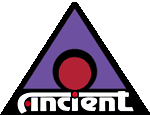 Strange. Unusual. Frankly, too Japanese. A lot of the output from small development houses in the Land of the Rising Sun attracts those descriptors, with an appeal that is too limited to perform well anywhere else. (Some of the stuff that gets released over there is so odd and idiosyncratic, it’s like diving deeper and deeper into the ocean.) Ancient, on the other hand, is certainly a small Japanese development house, with an entire staff count that probably amounts to a quarter of the number of people Squaresoft employs on its CG movies alone. But is Ancient strange or unusual? Certainly not, as its games have a kind of universal appeal. And that’s where we can find Ancient: between the independents, between the corporations, and entirely comfortable.
Strange. Unusual. Frankly, too Japanese. A lot of the output from small development houses in the Land of the Rising Sun attracts those descriptors, with an appeal that is too limited to perform well anywhere else. (Some of the stuff that gets released over there is so odd and idiosyncratic, it’s like diving deeper and deeper into the ocean.) Ancient, on the other hand, is certainly a small Japanese development house, with an entire staff count that probably amounts to a quarter of the number of people Squaresoft employs on its CG movies alone. But is Ancient strange or unusual? Certainly not, as its games have a kind of universal appeal. And that’s where we can find Ancient: between the independents, between the corporations, and entirely comfortable.